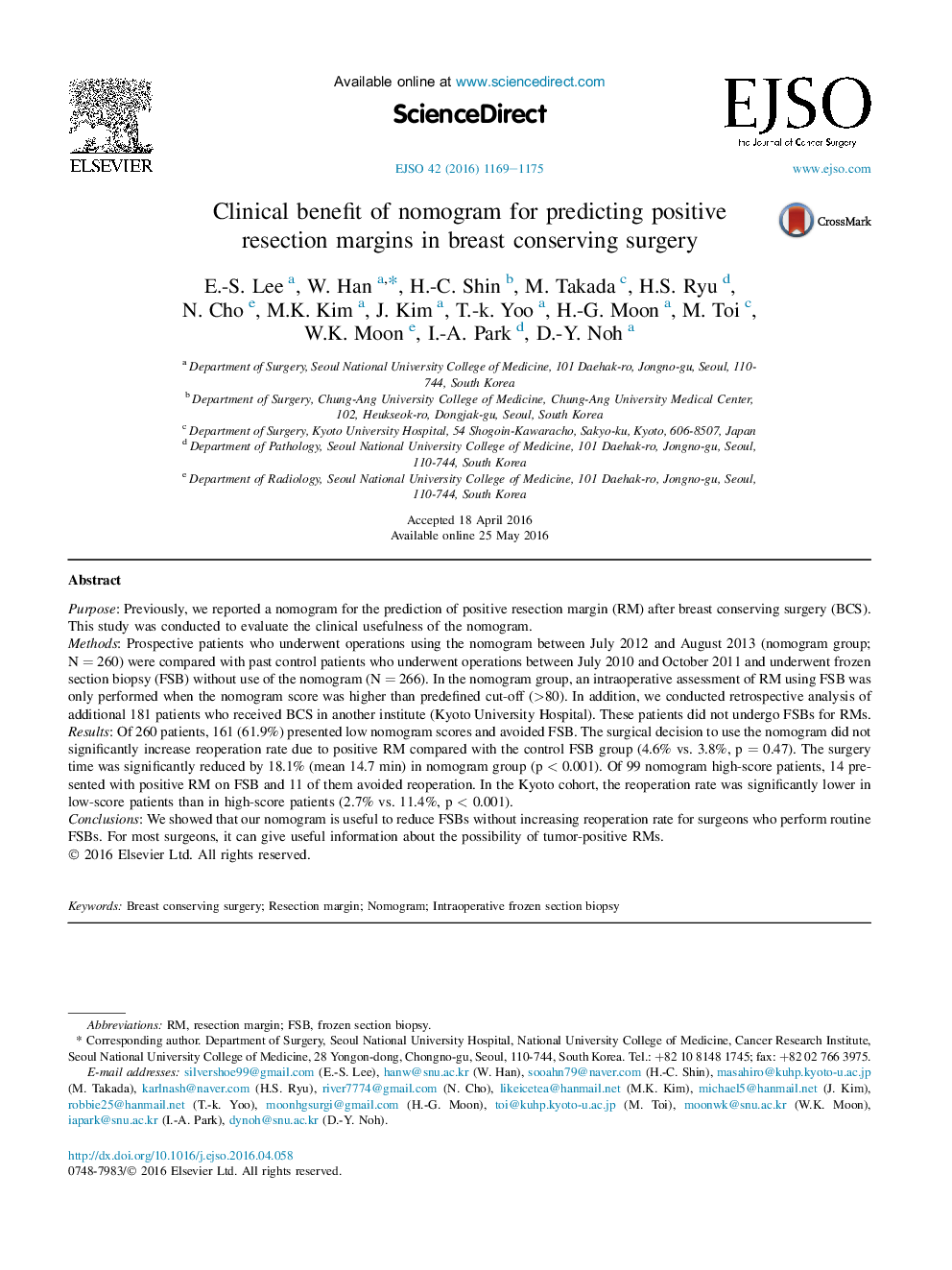| Article ID | Journal | Published Year | Pages | File Type |
|---|---|---|---|---|
| 3984411 | European Journal of Surgical Oncology (EJSO) | 2016 | 7 Pages |
PurposePreviously, we reported a nomogram for the prediction of positive resection margin (RM) after breast conserving surgery (BCS). This study was conducted to evaluate the clinical usefulness of the nomogram.MethodsProspective patients who underwent operations using the nomogram between July 2012 and August 2013 (nomogram group; N = 260) were compared with past control patients who underwent operations between July 2010 and October 2011 and underwent frozen section biopsy (FSB) without use of the nomogram (N = 266). In the nomogram group, an intraoperative assessment of RM using FSB was only performed when the nomogram score was higher than predefined cut-off (>80). In addition, we conducted retrospective analysis of additional 181 patients who received BCS in another institute (Kyoto University Hospital). These patients did not undergo FSBs for RMs.ResultsOf 260 patients, 161 (61.9%) presented low nomogram scores and avoided FSB. The surgical decision to use the nomogram did not significantly increase reoperation rate due to positive RM compared with the control FSB group (4.6% vs. 3.8%, p = 0.47). The surgery time was significantly reduced by 18.1% (mean 14.7 min) in nomogram group (p < 0.001). Of 99 nomogram high-score patients, 14 presented with positive RM on FSB and 11 of them avoided reoperation. In the Kyoto cohort, the reoperation rate was significantly lower in low-score patients than in high-score patients (2.7% vs. 11.4%, p < 0.001).ConclusionsWe showed that our nomogram is useful to reduce FSBs without increasing reoperation rate for surgeons who perform routine FSBs. For most surgeons, it can give useful information about the possibility of tumor-positive RMs.
